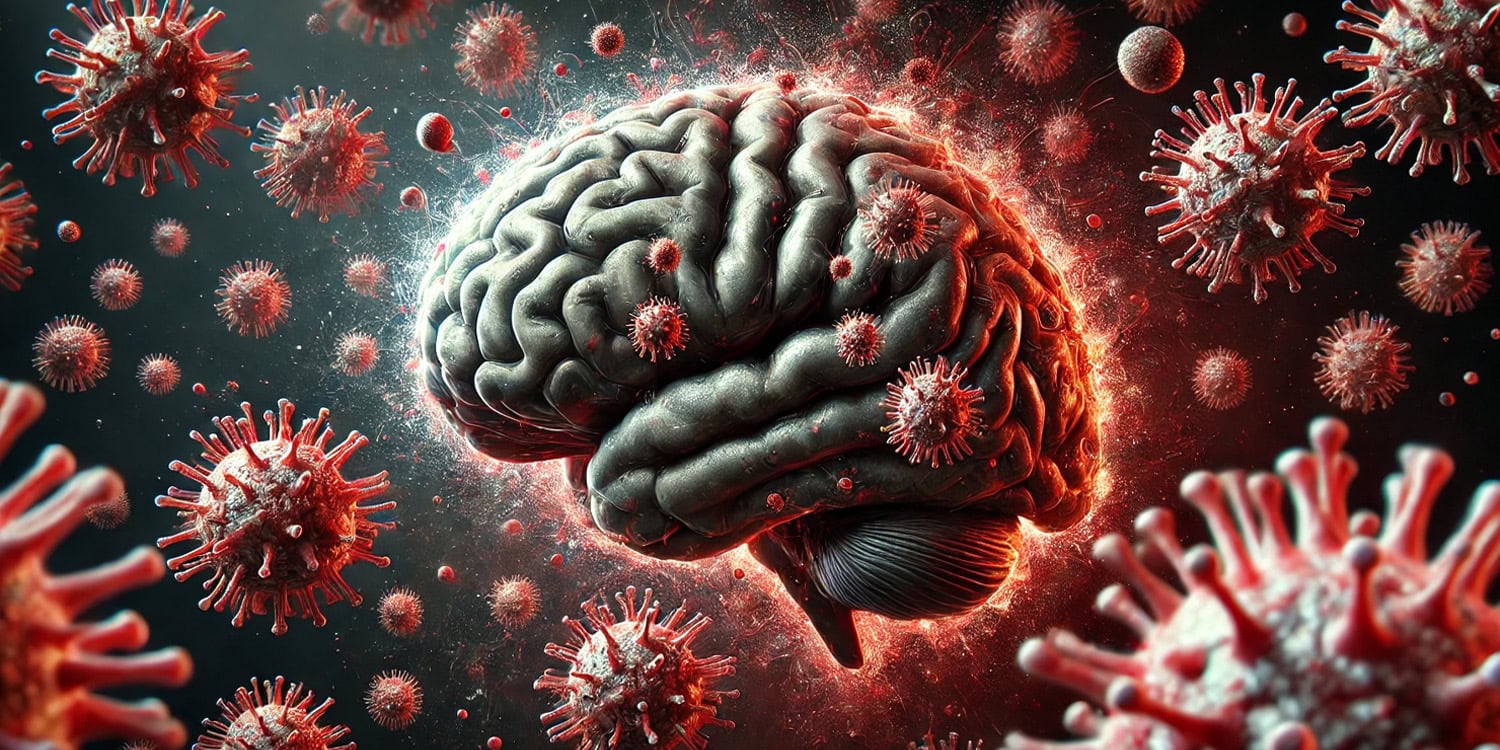A new study published in Psychiatry Research explores the relationship between fatigue in Long COVID and specific patterns of brain connectivity. Researchers observed that fatigue, one of the most common and debilitating symptoms in Long COVID patients, is associated with certain patterns of brain structure and function, particularly in the frontal and cerebellar regions. Notably, mental and physical fatigue were linked to distinct brain connectivity patterns, suggesting the possibility that different neural mechanisms may be involved in each type of fatigue.
Long COVID, also known as post-COVID syndrome, affects individuals who continue to experience symptoms months after recovering from the initial COVID-19 infection. Fatigue is one of the most common and disabling symptoms of Long COVID, affecting an estimated 35% to 60% of patients. Fatigue in these patients can be physical, cognitive, or both, severely impacting their ability to work and quality of life.
While fatigue has been widely studied in conditions like chronic fatigue syndrome and multiple sclerosis, much less is known about its neurological basis in Long COVID. Researchers wanted to investigate whether fatigue in these patients is related to specific patterns of brain connectivity, and how these patterns might differ between mental and physical fatigue. Understanding the brain’s role in fatigue could help guide treatments and improve patient outcomes.
“Among symptoms in Long COVID, fatigue is one of the most frequent and most disabling, and is usually persistent. Fatigue has been proven to have an impact on the patient’s quality of life and working status. We aimed to investigate the neural basis of fatigue in order to better understand the pathology and improve our knowledge to help design better treatments,” said study authors Maria Diez-Cirarda and Jordi Matias-Guiu of the Neurological Diseases Research group at Hospital Clinico San Carlos in Madrid.
For their study, the researchers recruited 129 individuals who had tested positive for COVID-19 at least three months prior. Participants were screened to exclude those with other neurological or psychiatric disorders that might interfere with the results. The average time since their initial COVID-19 infection was about 14 months, and most of the participants were women.
Each participant completed a detailed clinical and neuropsychological assessment. Fatigue levels were measured using the Modified Fatigue Impact Scale (MFIS), which assesses both cognitive (mental) and physical fatigue. Participants also completed a Stroop test, a well-known measure of cognitive control, to assess mental fatigue more objectively.
In addition to the psychological tests, participants underwent MRI scans to assess brain structure and functional connectivity. The scans included resting-state fMRI to measure functional connectivity and diffusion-weighted imaging to examine the integrity of white matter in the brain. The researchers were particularly interested in whether patterns of brain activity and white matter integrity were linked to the levels of fatigue reported by the participants.
The results of the study revealed that 86% of the participants reported significant levels of fatigue, with both mental and physical fatigue being prominent. Importantly, the researchers found that mental fatigue showed a different pattern of brain connectivity than physical fatigue.
Functional connectivity analysis revealed that both types of fatigue were associated with activity in the frontal areas of the brain. Physical fatigue was linked to increased connectivity between the cerebellum and the temporal lobe, while mental fatigue showed reduced connectivity between frontal regions and the cerebellum, as well as other areas of the brain, such as the insula and anterior cingulate cortex.
The study also looked at the integrity of white matter, the part of the brain that helps different regions communicate with each other. Both mental and physical fatigue were associated with changes in white matter diffusivity—specifically in areas like the forceps minor, the anterior corona radiata, and the cingulum. These findings suggest that differences in white matter integrity may be related to both physical and mental fatigue in Long COVID.
Interestingly, the study also found that subjective cognitive complaints, such as memory and attention problems, were closely linked to both physical and mental fatigue. However, these complaints were more strongly associated with physical fatigue than with objective measures of cognitive function, such as performance on the Stroop test. This discrepancy highlights the complex relationship between fatigue and cognitive symptoms in Long COVID patients.
“The present results revealed that fatigue in Long COVID is associated with structural and functional connectivity mostly in frontal areas but also temporal, and cerebellar areas,” the researchers told PsyPost. “These findings are relevant because they demonstrate that in patients with Long-COVID, brain dysfunction contributes to fatigue. In addition, these findings could help in the design of specific interventions, and pave the way to the use of non-invasive brain stimulation techniques to alleviate both physical and mental fatigue in these patients.”
“The results also highlight the relationship between fatigue and subjective cognitive complaints. These findings point out the relevance of the multidisciplinary assessment of patients with Long COVID with subjective cognitive complaints, in order to unravel the symptomatology beneath the patient’s complaints.”
The study provides new insights into the neural mechanisms related to fatigue in Long COVID, but there are some limitations to consider. The study used a cross-sectional design, meaning it only captured a snapshot of the participants’ brain activity and fatigue levels at one point in time. Longitudinal studies that follow patients over time are needed to determine whether these brain changes are permanent or temporary.
“We have performed a comprehensive assessment of these patients and published several papers on the topic regarding the cognitive and clinical symptoms in Long COVID and its cerebral correlates and biomarkers associations,” Diez-Cirarda and Matias-Guiu said. “Our next step is to assess these patients longitudinally in order to evaluate how these changes evolve over time. Longitudinal results will help in the characterization of the physiopathology of the disease.”
“Moreover, we are interested in the design of specific treatments to improve cognitive and fatigue symptoms in these patients using neuromodulation and cognitive training. We already published one study regarding the efficacy of neuromodulation over fatigue in Long COVID.”
The study, “Neural basis of fatigue in post-COVID syndrome and relationships with cognitive complaints and cognition,” was authored by Maria Diez-Cirarda, Miguel Yus-Fuertes, Carmen Polidura, Lidia Gil-Martinez, Cristina Delgado-Alonso, Alfonso Delgado-Álvarez, Natividad Gomez-Ruiz, Maria José Gil-Moreno, Manuela Jorquera, Silvia Oliver-Mas, Ulises Gómez-Pinedo, Jorge Matias-Guiu, Juan Arrazola, and Jordi A Matias-Guiu.




